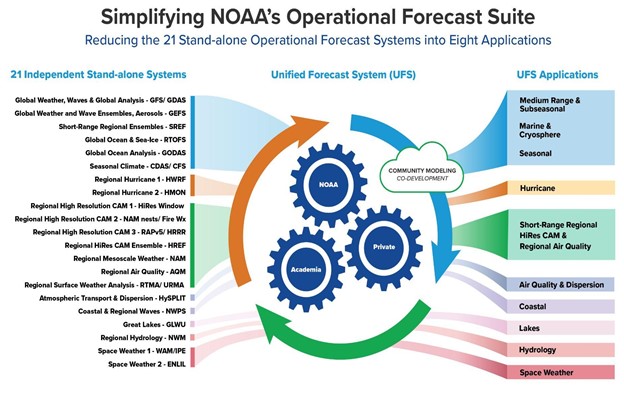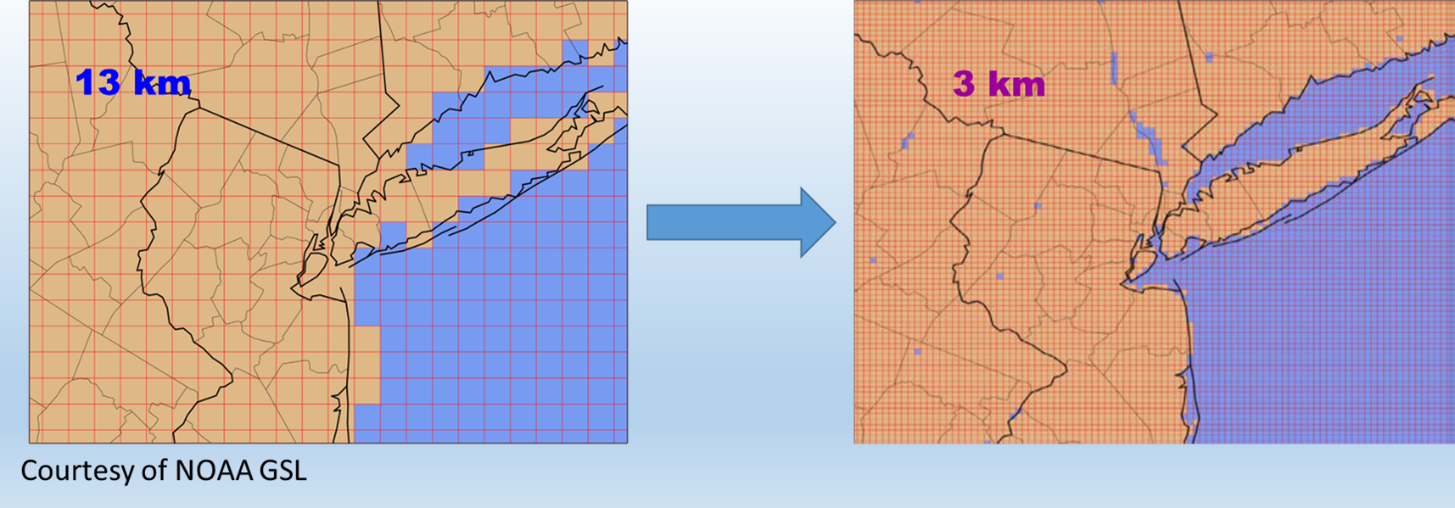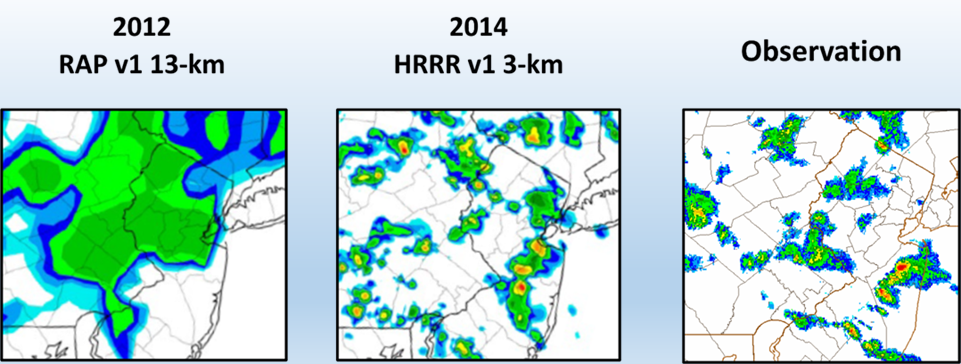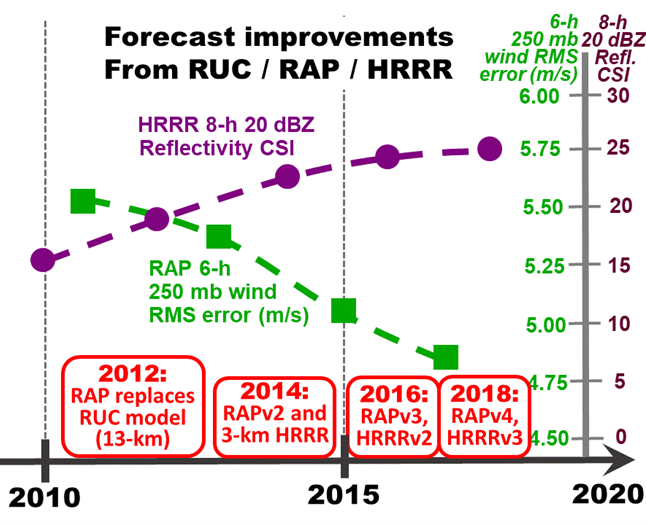Model Development and Enhancement (MDE)
Weather prediction models are the basis for all aviation weather hazard forecasts beyond 2 hours either through the direct use of model output or through translation of model output into relevant aviation parameters. The research conducted under FAA AWRP MDE is designed to improve these weather prediction models to enhance the safety and efficiency of the National Airspace System (NAS). The output of these enhanced models will be available for incorporation into new and emerging decision support tools and for use in human-generated and automated National Weather Service (NWS) forecasts. MDE research and development will improve aviation weather hazard forecasts for:
- In-Flight Icing
- Convective Weather
- Turbulence
- Clouds and Visibility
It is not practical for the FAA to run their own weather prediction models. Due to the vast amounts of weather observation data, the need for supercomputers, and the overlapping needs of multiple user groups, the National Oceanic and Atmospheric Administration (NOAA) NWS National Centers for Environmental Prediction (NCEP) operate and maintain the suite of weather prediction models used by aviation, along with agriculture, surface transportation, energy, and protection of life and property. The Rapid Refresh (RAP) model and the High Resolution Rapid Refresh (HRRR) are the two primary models used for aviation applications. NCEP is currently in the process of developing a Unified Forecast System (UFS) which will be centered around a common framework reducing their overall suite of multiple, disparate models. The RAP and HRRR nomenclature will be subsumed by a new Rapid Refresh Forecast System (RRFS). The RRFS domain will include the CONUS, Alaska, Hawaii and adjacent oceanic areas.

AWRP has achieved great success over the last two decades in developing and enhancing weather prediction models, moving from coarse horizontal resolution to models with higher resolution that includes more realistic terrain with inland bodies of water, mountains and valleys be better depicted. The higher resolution also allows for explicit predictions of weather parameters rather than the use of parameterizations or rules-of-thumb. This has resulted in graphical weather forecasts that also look more realistic.


But it is not just the appearance of the forecasts that are better. Statistical verification has shown constant improvement in the accuracy of model weather forecasts and a reduction in over-forecasting.

However to further build upon these gains and to effectively use benefits of high resolution models, more timely and precise forecast of aviation-specific weather hazards are needed. This will require the use of new observation sources, better representation of clouds, and more physically realistic methods of determining winds, temperatures, and moisture parameter that are critical to forecasting aviation weather hazards.
PLANNED ACCOMPLISHMENTS
RRFS v1* - Develop and prepare code with aviation enhancements. Initial implementation into NCEP operations using the UFS common framework is planned for FY26.
RRFS v2* - Develop and prepare code with aviation enhancements including improved data assimilation, convective weather forecasts, cloud and moisture forecasts. RAP and HRRR to be retired. Operational implementation target is FY28.
*Operational implementation is NOAA NCEP decision
MD&E RESEARCH SUPPORT TEAM
NOAA Earth System Research Laboratory (ESRL), Boulder CO
NCEP Environmental Modeling Center (EMC), College Park MD
National Center for Atmospheric Research (NCAR), Boulder CO
